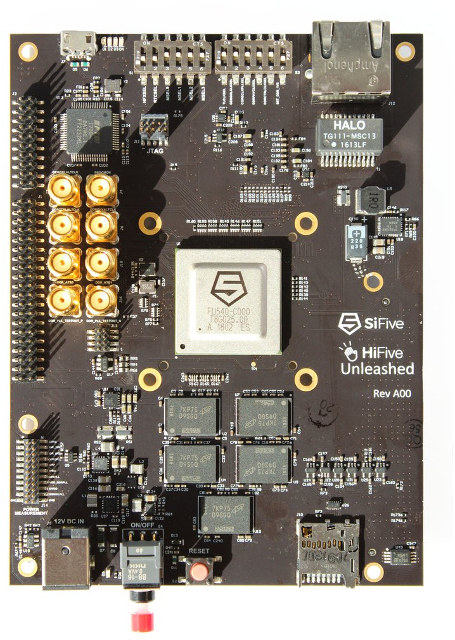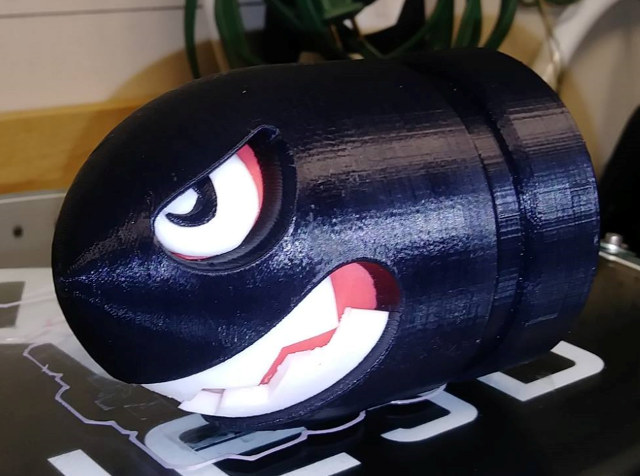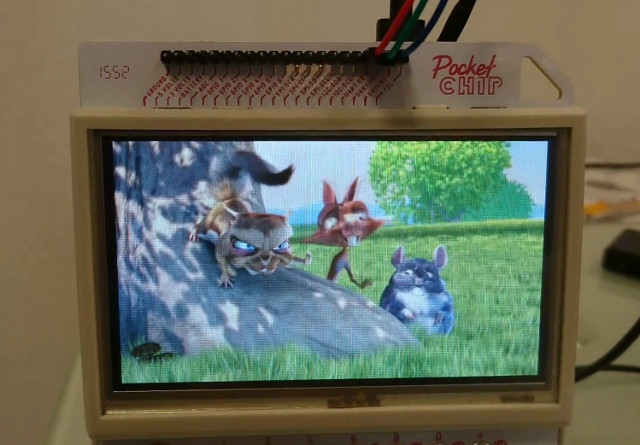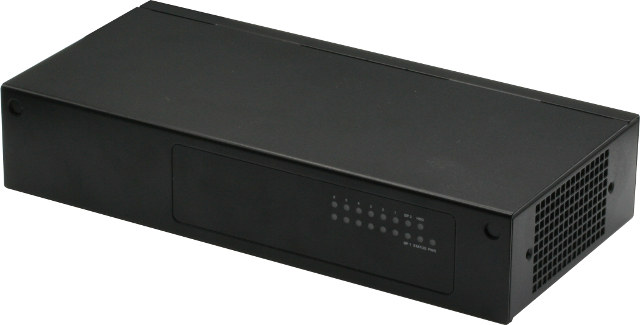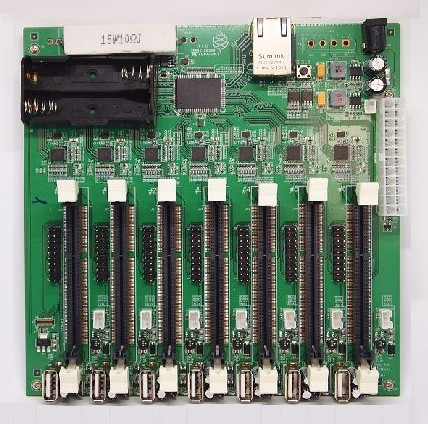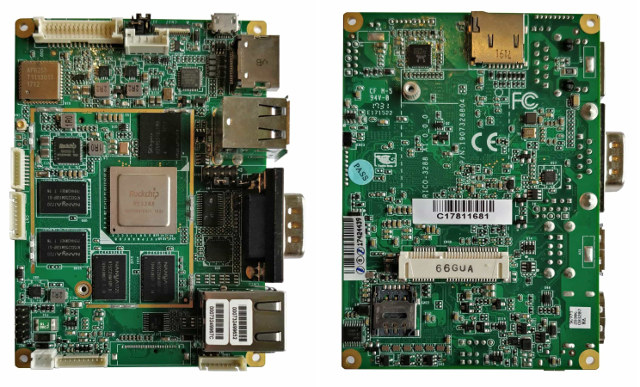A couple of weeks ago, I received IkaScope WS200 pen-like WiFi oscilloscope, as well as ScanaQuad SQ50 USB logic analyzer & signal generator, and I’ve already checked out the hardware both both in a aforelinked unboxing post. I had also very shortly tried IkaScope with GOLE 10 mini PC, but just to showcase potential use case for a Windows 10 mini PC with an inclined touchscreen display. But at the time I did not really a proper measurement, as it was more to test the mini PC than the oscilloscope itself. I’ve now had time to test IkaScope desktop program and mobile app in respectively Ubuntu 16.04 and Android 8.0.0, as well as ScanaStudio for ScanaQuad USB device using Ubuntu 16.04 only, since there’s no mobile version of the program. While I’ll focus on Ubuntu and Android, most of the instructions will be valid for Window 10 and Mac OS X […]
SiFive Introduces HiFive Unleashed RISC-V Linux Development Board (Crowdfunding)
RISC-V free and open architecture has gained traction in the last couple of years. SiFive has been one of the most active companies with RISC-V architecture, introducing Freedom U500 and E500 open source RISC-V SoCs in the summer of 2016, before launching their own HiFive1 Arduino compatible board, and later the official Arduino Cinque board. That’s fine if you are happy with MCU class boards, but RISC-V is getting into more powerful processors, and recently got initial support o Linux 4.15, so it should come as no surprise the company has now launched HiFive Unleashed, the first RISC-V-based, Linux-capable development board. HiFive Unleashed key features and specifications: SoC – SiFive Freedom U540 with 4x U54 RV64GC application cores @ up to 1.5GHz with Sv39 virtual memory support, 1x E51 RV64IMAC Management Core, 2 MB L2 cache; 28 nm TSMC process System Memory – 8GB DDR4 with ECC Storage – 32MB […]
HE3D K280 Delta 3D Printer Review – Part 2: Upgrades, Calibration, and More 3D Prints
Karl here with part 2 of my experiences with the K280. In the first part of HE3D K280 3D printer review, I spoke about some of the challenges with the K280 getting it calibrated and getting Marlin to work and the initial build. In this part, we are going to look at the new effector, cooling solution I designed, calibration, and general use. If you purchase a machine now you get an injected molded effector and 2 24v cooling fans which HE3D sent over after they saw my initial review. If you purchased a kit before they started including these parts you can pick them up here to upgrade. I would like to point out that this is my first Delta printer. I don’t want to really call this a review but a way to show my experiences. First things first If you purchase this kit I urge you to […]
Bootlin Wants to Bring Allwinner VPU Support to Mainline Linux (Crowdfunding)
I wrote about Free Electrons several times in the past due to their work on porting Arm SoCs to mainline Linux. Free Electrons is no more. But don’t be sad, as it’s not because they closed shop, but instead they changed their name to Bootlin due to trademark trolls. Free Electrons Bootlin intensively worked on Allwinner processors, for example working with Next Things Co. to add CHIP board to mainline Linux, or more recently adding support for OpenGL ES in mainline Linux, albeit with closed-source user space binary blobs. The company normally work with partners for their work, but for their latest initiative aiming to bring Allwinner VPU (Video Processing Unit) to the official Linux kernel there’s asking funding from the community through a Kickstarter campaign. For those who do not know, the VPU is the IP block within the SoC used for hardware video decoding of codecs such as MPEG2, […]
M1 3D Holographic Display is a Fan Showing Holograms from Videos and Photos
I’ve been watching or reading news about holographic displays recently where you can watch 3D objects into space without 3D glasses. Not the IoT gateway with an holographic maid, but I watched some hologram demos recently, and RED is bringing an (expensive) Android phone – called Hydrgen – to market with an holographic display. Today, I was made aware that you can buy some sort of fan to produce holograms designed in your own computer. It’s referred to “M1 Naked Eye 3D Holographic Advertising” in several shops, and as the name implies it’s likely mostly useful for businesses rather than home users. Hardware specifications: LEDs – 224x RGB0805 LEDs, 100,000 hours life Display – 16.53″ with 450 x 224 pixel resolution; viewing angle: 150° Supported media mp4, avi, rmvb, mkv, gif, jpg, png 3D effect media – MP4 or GIF with black background Storage – micro SD slot for media […]
AAEON FWS-2360 Denverton Desktop Network Appliance Supports up to 6 Ethernet Ports, SATA Storage
Last summer, we started to see products and motherboards based on Intel Atom C3000 series Denverton SoC, including GIGABYTE MA10-ST0 server motherboard and Axiomtek NA362 network appliance with up to 10 LAN ports. AAEON has informed me they’ve launched their own Denverton network appliance with AAEON FWS-2360 equipped with a pair of fiber/copper SFP GbE ports, four GbE ports and two Mini-card slots to accommodate WiFi and 4G LTE expansion. The device also comes with an mSATA socket and a 2.5” SATA bay for storage. AAEON FWS: SoC (one or the other) Intel Atom C3308 dual core Denverton processor @ 1.60 / 2.20 GHz with 4MB cache; 9.5W TDP Intel Atom C3558 quad core Denverton processor @ 2.20 GHz with 8MB cache; 16W TDP System Memory Dual core – 1x DDR4 SODIMM ECC DIMM Quad core – 2x DDR4 SODIMM ECC DIMM Storage – On-board eMMC flash up to […]
Pine64 ClusterBoard is Now Available for $100 with one Free SOPINE A64 System-on-Module
We’ve previously reported Pine64 had developed “Sopine Clusterboard” for a specific project with support for up to seven SOPINE A64 SoMs powered by Allwinner A64 quad core Cortex A53 processor. At the time (August 2017), it was unclear whether the company would sell to the solution publicly, but they’ve now gone ahead and launched Pine64 ClusterBoard for $99.99 plus shipping, including one free SOPINE A64 module for a limited time. PINE64 ClusterBoard specifications: SoM Slots – 7x SO-DIMM slot for SOPINE A64 modules Connectivity 1x Gigabit Ethernet port (RJ45) All SoMs are connected via Gigabit Ethernet using 7x RTL8211E transceivers and RTL8370N network switch (See diagram below) USB – 7x USB 2.0 port, one per SoM Expansion – Headers for each SoM with UART (serial console), I2C, key ADC, GPIOs, SPI, RESET/POWER 5V and GND Misc – RTC, reset button, optional EEPROM connected to RTL8370N Power Supply 5V/15A via power barrel […]
Amarula Vyasa is a $150 Pico-ITX Single Board Computer Powered by Rockchip RK3288 SoC
Yesterday, as I published Linux 4.15 changelog for Arm and MIPS, I discovered a new Rockchip RK3288 platform described as “Amarula Vyasa single board computer”, so that got me interested. The full name of the company is “Amarula Electronics Limited Sony UK”, which means Vyasa is the name of the board. Amarula Vyasa relies on a 2.5″ Pico-ITX form factor, and is available in either commercial and wide temperature (WiTAS) range. The board is equipped with 2GB RAM, 16GB eMMC flash, exposes ports and connectors such as HDMI 2.0, eDP, and LVDS, and plenty of network connectivity (WiFi, Ethernet, mPCIe modem…) that would make it suitable for a connected digital signage, or other applications requiring a (touchscreen) display and redundant Internet / network connectivity. Amarula Vyasa specifications: SoC – CPU Rockchip RK3288 (ARM CortexTM -A17 Quad-core 1.6GHz) System Memory – 2GB DDR3L SDRAM Storage – 16GB eMMC flash, Micro SD […]



